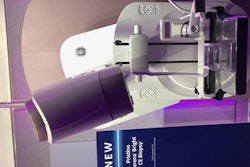Dear Advanced Visualization Insider,
Radiomics continues to demonstrate potential as a valuable tool in the management of lung cancer patients. For example, researchers from H. Lee Moffitt Cancer Center and Research Institute in Tampa, FL, recently reported that CT radiomics features can portend future tumor behavior in lung cancer found during lung cancer screening.
In addition, they've described the potential for PET/CT radiomics to help in guiding treatment decisions in patients with non-small cell lung cancer. You can learn all about their findings in this edition's Insider Exclusive.
Meanwhile, a group led by researchers from Cincinnati Children's Hospital Medical Center has detailed how a quantitative MRI software application can predict which preterm infants will go on to develop motor development disorders such as cerebral palsy. This insight could potentially enable risk stratification and targeted, aggressive early intervention therapies.
Volumetric blood flow in fetal heart imaging can be measured using 4D MRI, enabling cardiologists to use MRI to simultaneously study the fetal heart structures and track blood flow, according to researchers from London.
In other news, a team from Japan has developed a device that can be attached to normal eyeglasses to enable surgeons to view fluoroscopic images used for spinal surgical guidance. In a pilot study, the researchers found that the eyeglass device allowed the surgeons to more efficiently focus on operating tasks, resulting in slightly shorter surgical times and less radiation exposure.
Image-guided biopsies performed after breast cancer patients have been treated with neoadjuvant chemotherapy can predict the presence of residual cancer, according to a multinational team of researchers. As a result, surgery could potentially be avoided in exceptional responders to treatment.
Speaking of predicting outcomes, machine-learning models that assess both intratumoral and peritumoral radiomics features on pretreatment CT images can offer a promising level of performance for forecasting treatment results in esophageal squamous cell carcinoma patients. Researchers from China found that combining both intratumoral and peritumoral features yielded better results than just classifying patient response using only intratumoral radiomics features.
In addition, PET radiomics shows promise as a useful tool to help clinicians personalize care and potentially produce better outcomes in patients with head and neck squamous cell carcinoma. Researchers from the Netherlands found that eight radiomics features and various clinical factors enabled prediction of distant metastasis, overall survival, and recurrence.
Is there a story you'd like to see covered in the Advanced Visualization Community? Please feel free to drop me a line.




















